By Priyamvada Kowshik
“I remember being disappointed to learn that. A couple of years later, when the moon-landing finally happened in 1969, we listened to the live stream on All India Radio. That was an era when scientific discussions were as much part of our living rooms as they were in our classrooms,” recalls Professor Shastri (63), Emeritus Scientist at the Raman Research Institute, Bengaluru.
One of the foremost astrophysicists in the country, Prof Shastri specialises in supermassive black holes at the centre of distant galaxies and the jet streams emerging from them.
She is equally passionate about dismantling the patriarchy in science, and the inequities and systemic barriers for women in physics. Shastri wants to build an inclusive physics community, where people of all backgrounds can thrive.
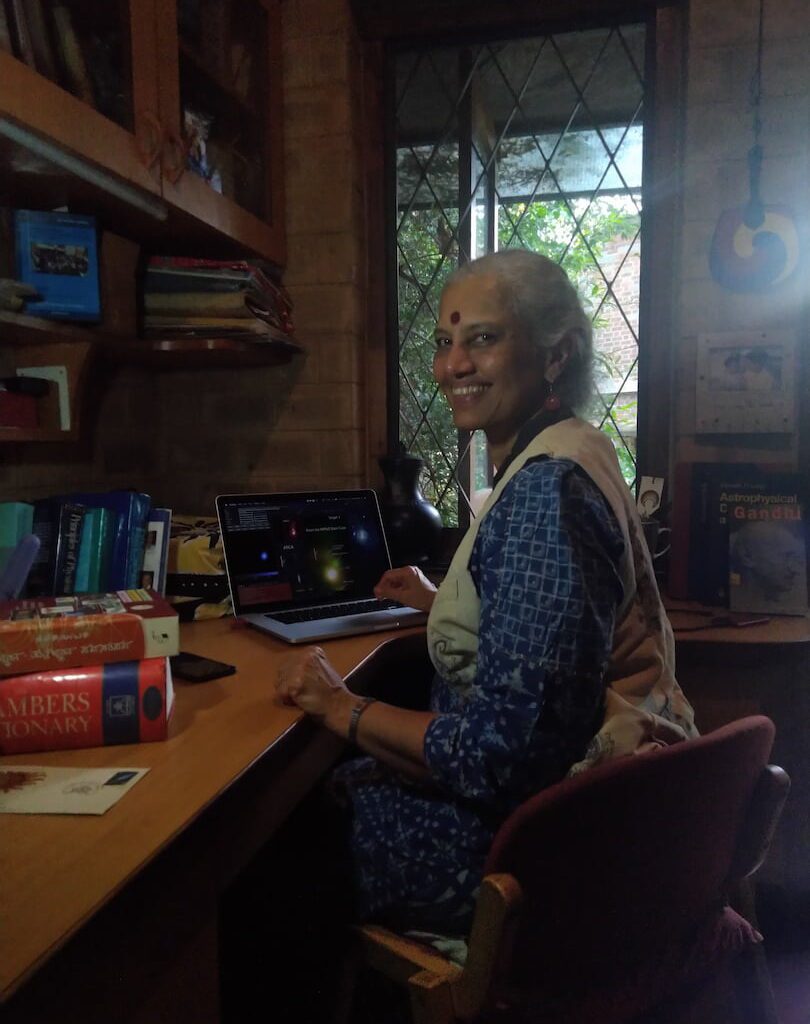
Women in science represent an important societal intersection and among the sciences, physics has one of the largest gender gaps among science disciplines. To address this inequity, Prof Shastri founded and chaired the Gender in Physics Working Group (GIPWG) of the Indian Physics Association (IPA). She also conceived and led the drafting of the Hyderabad Charter for Gender Equity in Physics, a call to action to the Indian physics community to address gender disparity.
A detested tag: woman first, scientist later
Shastri’s physics education started purely out of a passion for science. She was born a year after the Sputnik launch; her father was a practising medical doctor, and her mother a science buff.
An education at St Agnes College in Mangaluru nurtured her scientific spirit, but it did not give her any inkling of the gender inequities in her chosen discipline. “In school, our science and mathematics teachers were women; in college, it was an equal mix. I saw education as a gender-equal space. I knew about caste, class and gender inequities in the outside society, but I had not yet awakened to the systemic inequities within education, especially physics,” she tells 101Reporters.
That was until she joined IIT Bombay for her master’s programme. “We were 80 females amid 2,000 male students across all streams. And that is the first time I encountered remarks like ‘Oh, girls do well because they are bookish… girls are not bright’,” she recalls.
One incident that impacted her was when she scored higher than her male lab partner. “I was told I got a higher grade because I am a girl. It was demoralising, and I could not process it initially, despite being a fairly politicised person. I read history and philosophy, in addition to science, and was very much alive to what was happening around me,” says Shastri.
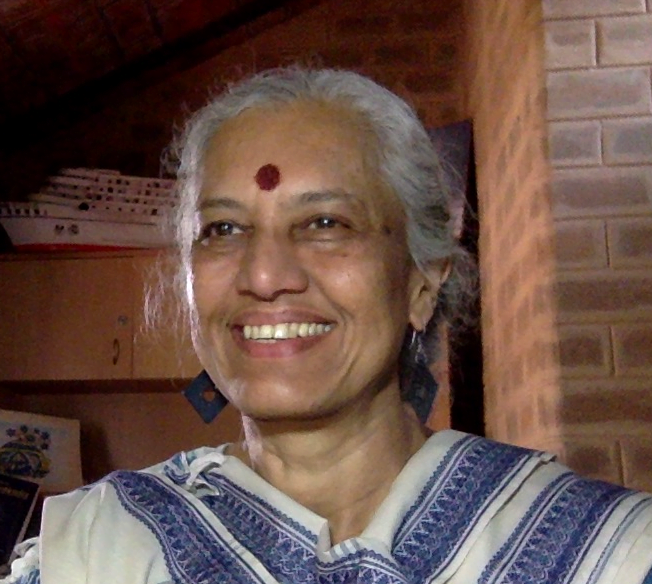
During her PhD studies at the Tata Institute of Fundamental Research, the experience of inequality “was up by a couple of notches“. “Our identities were first defined as women, not as passionate science scholars,” Shastri says candidly.
In 1992, while pursuing her postdoctoral research in the US, the landmark Baltimore Charter for Women in Astronomy — which addressed the need to develop a scientific culture within which both women and men can work equally and effectively — was held.
“That opened my eyes to how the inequity we experience results from a systemic phenomenon of patriarchy within the sciences. Patriarchy associates science with brilliance and tells you that women are not as brilliant as men. Women also internalise these stereotypes. So the general perception is that science gets more challenging for women as they progress to higher education and research. However, they don’t discuss the barriers and biases within. No study has found a productivity or competence deficit in women. On the contrary, stereotypes and barriers have been identified,” Shastri reveals.
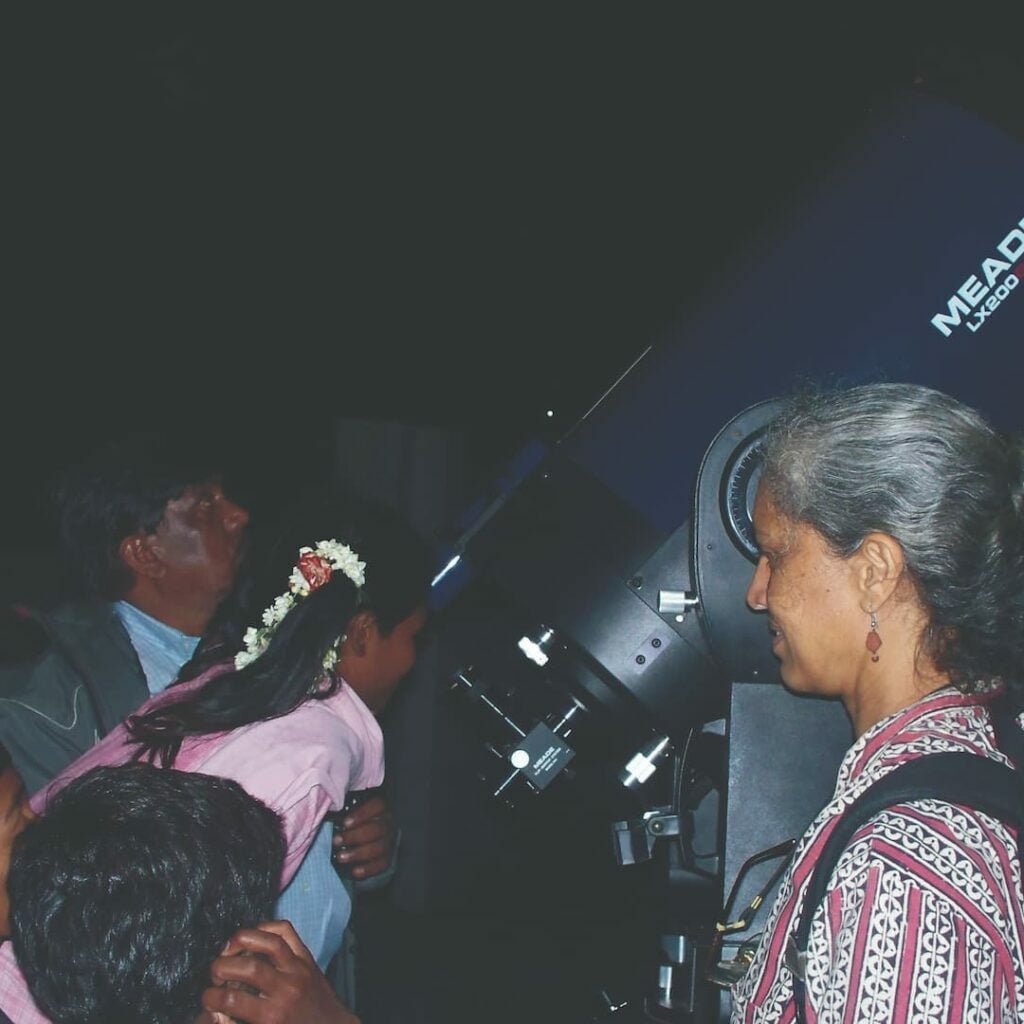
In the hiring process, these biases “unconsciously” put women candidates at a disadvantage. “When a woman applies for a faculty position, instead of simply looking at her academic track record, teaching experience, research and recommendations, the hiring committees start to second guess if she is married, will she do so, will she relocate, get pregnant, or will we lose her for a year for maternity leave,” Shastri elaborates.
Branding as incompetent
“If you’re talking about inequity, you must be an incompetent scientist.” This deep-rooted bias was quite evident to Shastri ever since she returned to India in 1995, as a faculty member at the Indian Institute of Astrophysics (IIA), Bengaluru. It took her more than a decade to publicly voice her views.
In 2008, the conversation around gender inequity in physics and its impact on scientific productivity and excellence gathered momentum. To celebrate 400 years of Galileo’s discovery, 2009 was declared the International Year of Astronomy by the United Nations. The powerful motto, ‘She is an Astronomer‘, centred around the gender issue in astrophysics. The IIA was a focal point for these activities in the country, with Shastri in the lead.
The International Union of Pure and Applied Physics (IUPAP), a global union of professional physicists, has a working group for Women in Physics (Shastri prefers the more inclusive term ‘Gender in Physics‘). It organises international conferences every three years where, alongside cutting-edge research, interactive workshops on addressing gender inequities are held. The country teams are responsible for keeping the discourse alive within the physics community. In 2011, Shastri joined her colleagues who were involved with the IUPAP and started speaking up about the inequities in scientific forums.
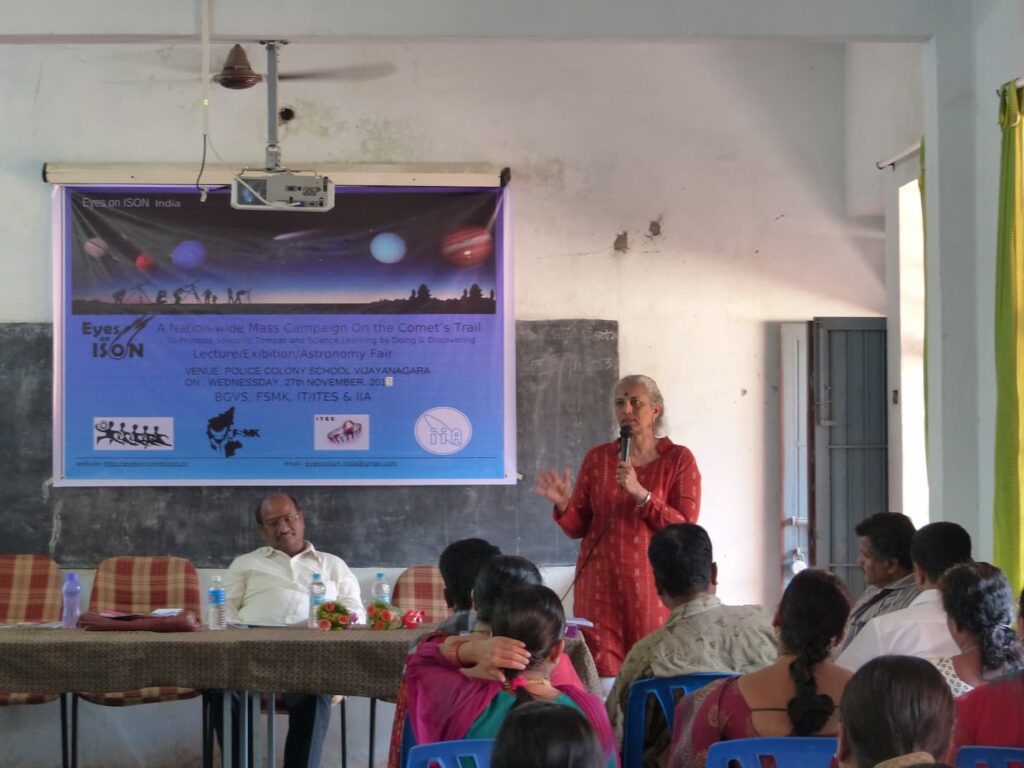
“When I attended the 2011 conference as India’s team leader, I realised that we did not have a forum or society to discuss these recommendations,” says Shastri, while elaborating on how she proposed (in 2011) and eventually led the GIPWG in 2017.
Women and people of marginalised social identities in science widely report that raising issues of inequity leads to their core academic work being undervalued. “Forget about talking of equity in science; even if I am involved in science outreach activities, I have to work harder at my research to not be called incompetent,” says Shastri. Her research papers not only deal with the black hole-galaxy connection but also gender inequity. She addresses issues such as science communication in regional languages as well.
Shastri rightly emphasises the need for a course on the social processes in science practice, as a part of the graduate physics curriculum.
Posing tough questions
It was from multiple academic discussions of the GIPWG that the Hyderabad Charter emerged. ‘Pressing for Progress‘, an interdisciplinary three-day conference, was held at Hyderabad University in September 2019, bringing together both scientists and social scientists. Apart from the workshops on the latest research in physics, sociological discussions and innovative theatre methodologies were used to explore issues of gender inequity.
The guiding principle of the Hyderabad Charter is that inequity results from patriarchy, both social and within the sciences. The charter noted: “The fraction of women with PhDs in physics, who are employed in tertiary education countrywide, is just 20%, far less than in biology. That fraction plummets to 10% and lowers in elite research institutions, leadership positions, and honours lists. The low fraction cannot be explained as a lack of interest in physics among girls — they win almost 50% of the INSPIRE fellowships in physics.”
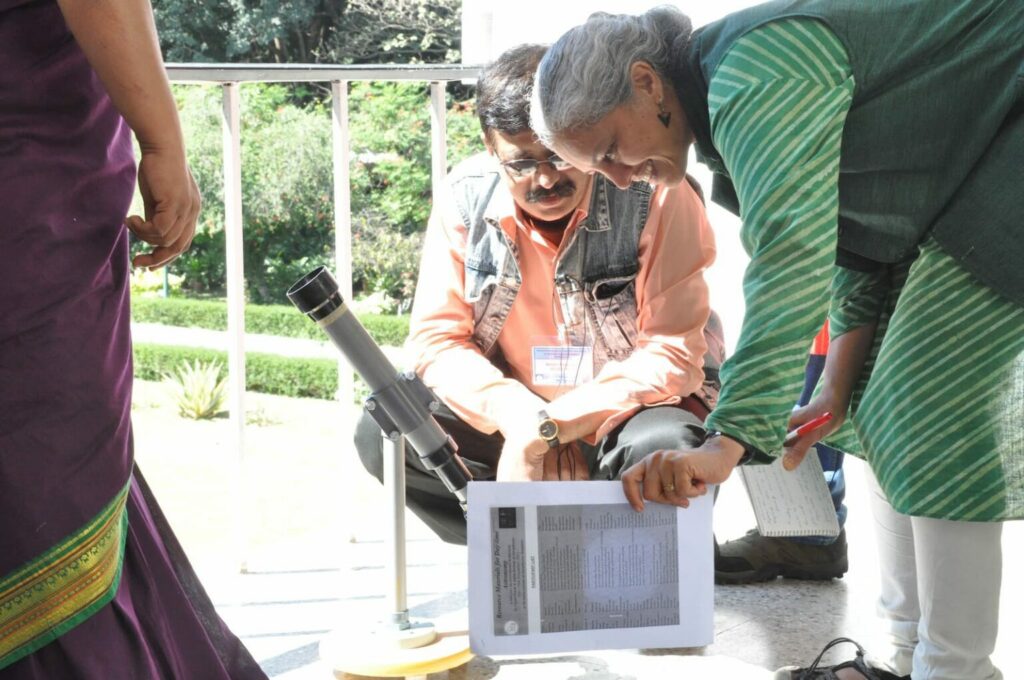
Some call it the “leaky pipeline“, but Shastri dismisses the metaphor. “It is a matter of the barriers getting bigger as women progress in their scientific studies“, she says.
The Hyderabad Charter calls for higher education and research institutions to have transparent criteria for hiring, the absence of which lands up being discriminatory towards women and minorities. Some key recommendations are: excluding the status/position or background of the spouse when assessing merit, encouraging work-life balance policies, including gender-neutral childcare leave, investing in diversity officers in committees for selection, hiring, promotion, and research funding, etc. It notes that the commitment of institutional leaders is key to making progress.
Shastri continues to use every platform to keep the discourse alive. “We are trying to get endorsements for the Hyderabad Charter from physicists across the country and 350 of them have endorsed it so far,” Shastri says.
Acknowledging Shastri’s contribution, Dr Mamta Pandey-Pommeir, Chair of The International Astronomical Union’s Women in Astronomy Working Group, France, tells 101Reporters that Shastri’s work has truly promoted Indian women’s careers in astronomy.
About the author(s)
101Reporters is a pan-India network of grassroots reporters that brings out unheard stories from the hinterland.





